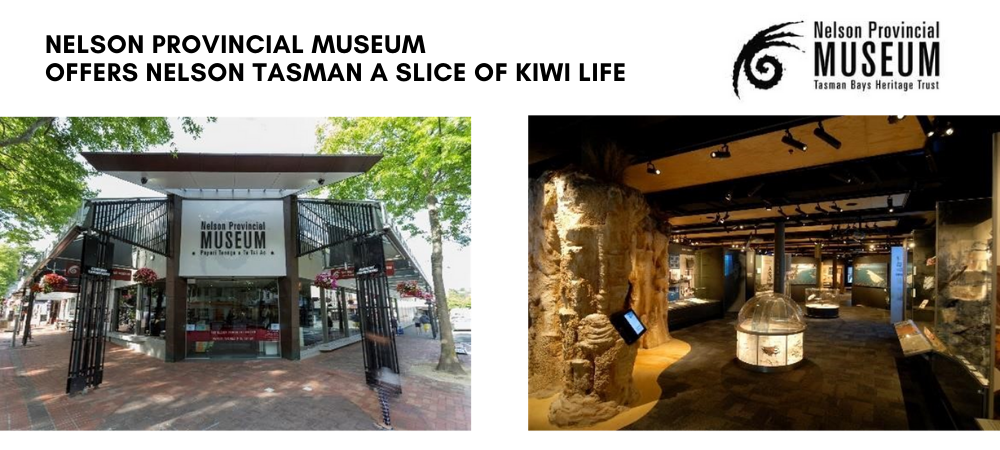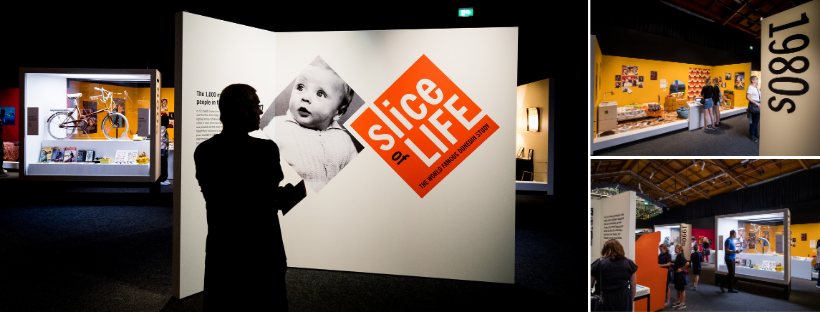NELSON PROVINCIAL MUSEUM OFFERS NELSON TASMAN A SLICE OF KIWI LIFE

Nelson Provincial Museum is reviving a lifetime of Kiwi memories this summer as it presents its latest exhibition about the world famous Dunedin Study – Slice of Life – from Friday, 13 November.
Developed by the University of Otago Te Whare Wānanga o Otāgo and Toitū Otago Settlers Museum, the exhibition features a carefully chosen collection of era-specific objects – toys, posters, furnishings, technology – and four era-themed rooms from the 1970s, 80s, 90s and 2000s.
Together, these give a nostalgic glimpse into the lives of the 1000+ members of the Dunedin Study. It also includes a number of hands on interactives designed to enable visitors to connect with the Study’s findings in a deeply personal and engaging way.
Known in full as the ‘Dunedin Multidisciplinary Health and Development Study’ the Dunedin Study, which began in 1975, was originally designed as a short-term project to explore how birth events affect later health. A growing interest in the results, however, enabled continuation of the Study, and today – 45 years on – it has become renowned across the world as one of the most significant projects of its kind. Participants are considered to be the thousand most studied people in the world.
“The Dunedin Study has been hugely influential, producing over 1300 publications and reports – many of which have informed policy makers in New Zealand and overseas”, says Sean Hogan, Cohort & Assessment Manager for the Dunedin Study and curator of the exhibition. “One notable example would be the result of Study findings around criminal behavior in youth seeing a policy change in the US which spared the lives of 70 people on death row.”
Key to the Study’s success has been its high retention rate – 94 per cent of the living Study member cohort are still involved after 45 years, a feat no other study in the world has managed to achieve. The exhibition celebrates the commitment of these Study members, and enables people to better understand the methods, major findings and importance of the Dunedin Study.
Visitors are invited to participate in a light-hearted study of their own bodies through the use of hands-on equipment and an ‘ageing’ machine. They’re also encouraged to remember their own experiences of the past four decades – from starting school to heading off on the big OE, learning to read through to learning to drive, maybe experimenting with sex, drugs and alcohol, and settling down with children – through the aid of collected historical material and décor from the 1970s to the 2000s. Associated research findings also give visitors an insight into how their early lives may have influenced who they are today.
“The Dunedin study shines a light on how seemingly small events can shape our future”, says Nelson Provincial Museum CEO Lucinda Blackley-Jimson. “This is such an important message from a Museum perspective, and the Slice of Life exhibition demonstrates this in a powerfully engaging way.”
Although the exhibition concentrates on Study findings from the 1970s through to the 2000s, work on the Dunedin Study has continued, with hopes for the next assessment to be conducted around 2024. Tests cover almost all aspects of a member’s physical and mental health – including cardiovascular health, dental, respiratory and sexual and mental health, psychosocial well-being, and the impact of relationships, behaviour and family. Key to the Study’s high retention rate is in the way it engages with its members by arranging travel from wherever they are in the world to the purpose-built research centre during study periods.
“We’re 45 years into the Study so far and it’s feasible we could go for another 45 years, there’s just still so much to discover”, says Hogan. “With our Study members now in their forties we’re starting to gain insights into how we age, for example, and why some people age better than others.”
Slice of Life opens at Nelson Provincial Museum on Friday, 13 November this year, and will run until Sunday, 25 April 2021. You can find out more about it on the Museum’s website here: www.nelsonmuseum.co.nz/current–exhibitions/2020/slice–of–life
About Nelson Provincial Museum
Nelson Provincial Museum, originally founded in 1841 as the Literary and Scientific Institution of Nelson, is New Zealand’s oldest museum.
The Museum is the regional Museum of Nelson Tasman and is operated by the CCO Tasman
Bays Heritage Trust (TBHT). The Museum is generously funded by Nelson City and Tasman District Councils. The Museum cares for the regional heritage collection.
The Museum is located in the heart of Nelson city and is a significant local attraction. It offers a dynamic programme of major touring exhibitions each year alongside a series of public talks, an educational programme, outreach activities and various exhibition-related workshops to approximately 70,000 residents and visitors of the Nelson Tasman region.
The Museum’s collection of taonga, artefacts and archives is stored at the Research Facility in Isel Park. It is renowned for its UNESCO inscribed Tyree Studio Collection of photographs, which documents the people and the development of the Nelson Tasman region from the 1860s to the 1940s.
Tasman Bays Heritage Trust is guided by the six mana whenua iwi of Nelson Tasman via the Te Tai Ao Komiti, who advise on matters pertaining to Taonga, tikanga and matauranga Māori.



This Post Has 0 Comments